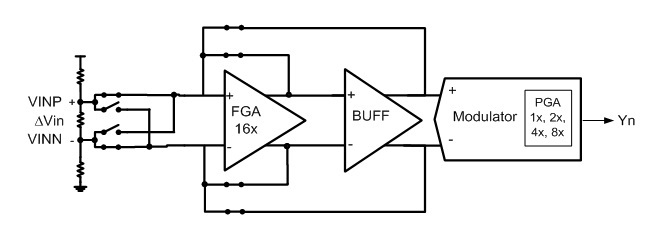Hi,
I am going over the AN-2180 application note trying to understand how the background calibration works. Maybe I am missing something that is normally obvious, but I am having a bit of trouble with Section 3 in the paragraph that explains the PGA gain calibration:
"Gain calibration for the PGA (programmable gain amplifier, 1x to 8x) in the modulator is done by obtaining the output at alternate input samples with the FGA and buffer OFF. The PGA gain coefficient is obtained by dividing the difference of these outputs by the difference of these alternate input samples. The digital output code is multiplied by the PGA gain factor to correct for the PGA error."
Specifically:
- Why alternate input samples?
- Why the difference of them?
In the paragraph immediately before the gain calibration for the FGA is explained and it is easy to see how it works (maybe except for the use of "alternate input samples").
Is the use of alternate samples because of the ADC internally reversing the inputs not only for the offset calibration but also for the gain calibrations? Does the ADC reverses the inputs internally all the time?
Thank you.


